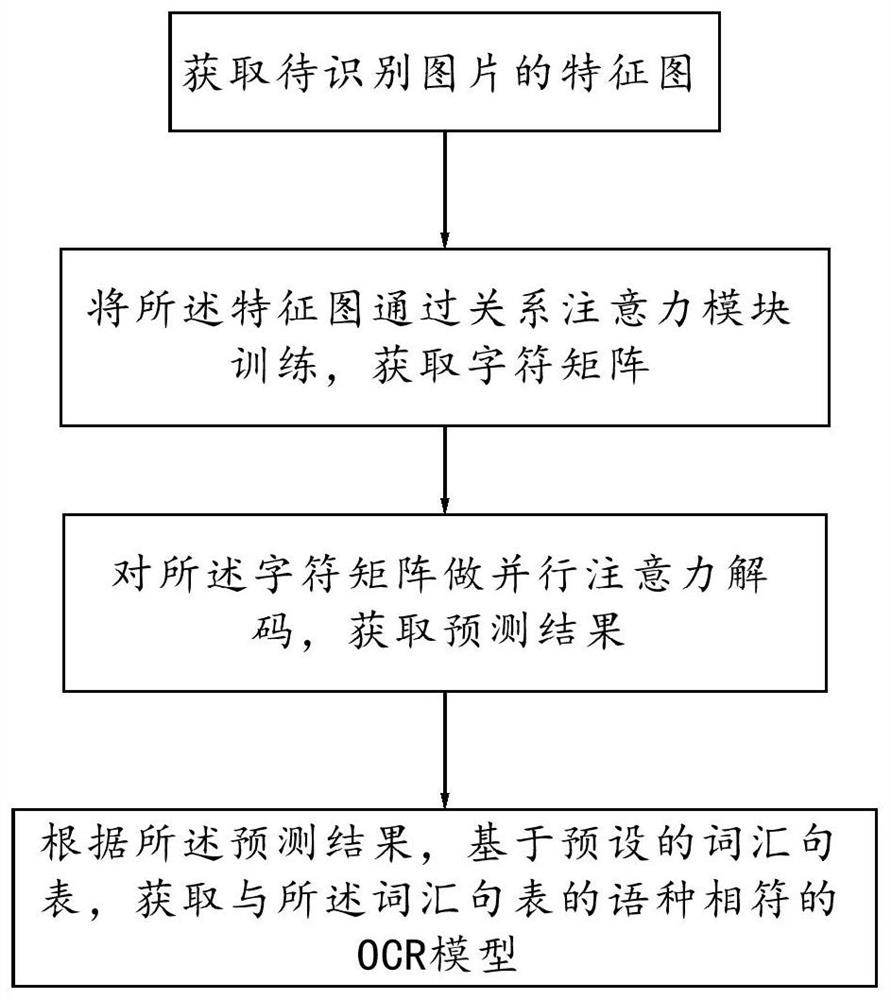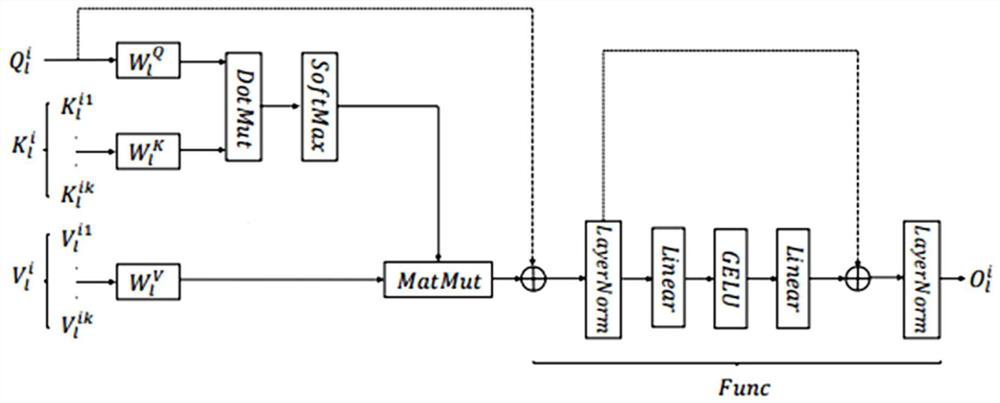Multilingual end-to-end OCR algorithm and system
A multi-language, algorithmic technology, applied in the field of OCR algorithm, can solve the problems of context information loss, too many parameters, loss, etc., to achieve good training results, simple training process, and reduce the amount of parameters.
- Summary
- Abstract
- Description
- Claims
- Application Information
AI Technical Summary
Problems solved by technology
Method used
Image
Examples
Embodiment 1
[0059] refer to figure 1 , a multilingual end-to-end OCR algorithm based on self-distillation transformer and label-refinement, including:
[0060] Obtain the feature map of the picture to be recognized;
[0061] The feature map is trained through the relationship attention module to obtain the character matrix; the relationship attention module is a relationship attention module based on the self-distillation transformer module;
[0062] Perform parallel attention decoding on the character matrix to obtain prediction results;
[0063] According to the prediction result, based on the preset vocabulary and sentence list, an OCR model matching the language of the vocabulary and sentence list is obtained.
[0064] The relationship attention module of the present disclosure is a structure improved with reference to the BERT framework in the NLP field; the structure is as follows figure 2 As shown, the relational attention module includes:
[0065] N bidirectional transformer la...
Embodiment 2
[0094] A multilingual end-to-end OCR system based on self-distillation transformer and label-refinement, including:
[0095] The feature extraction layer is used to obtain the feature map of the picture to be recognized;
[0096] The relationship attention module is used to train the feature map and obtain the character matrix; the relationship attention module is a relationship attention module based on the self-distillation transformer module;
[0097] The parallel attention decoding layer is used to perform parallel attention decoding on the character matrix to obtain prediction results.
[0098] As an optional solution of the above-mentioned embodiment, the relationship attention module includes:
[0099] N bidirectional transformer layers, each transformer layer includes M transformer nodes; N≥2, M≥2;
[0100] Any transofrmet node of the N-1th transofrmet layer is connected to all transofrmet nodes of the Nth transofrmet layer.
[0101] As an optional solution of the f...
PUM
 Login to View More
Login to View More Abstract
Description
Claims
Application Information
 Login to View More
Login to View More - R&D
- Intellectual Property
- Life Sciences
- Materials
- Tech Scout
- Unparalleled Data Quality
- Higher Quality Content
- 60% Fewer Hallucinations
Browse by: Latest US Patents, China's latest patents, Technical Efficacy Thesaurus, Application Domain, Technology Topic, Popular Technical Reports.
© 2025 PatSnap. All rights reserved.Legal|Privacy policy|Modern Slavery Act Transparency Statement|Sitemap|About US| Contact US: help@patsnap.com



